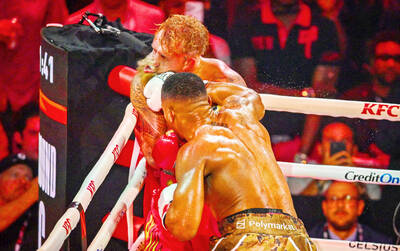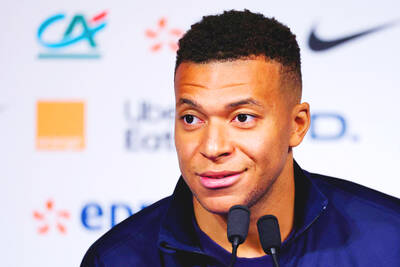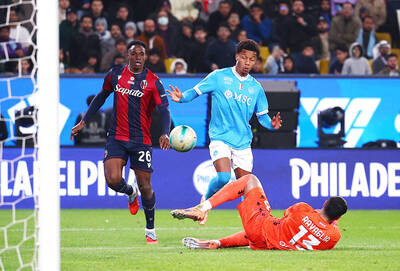If designing the prototypical leadoff hitter, you'd want a player who gets on base often and scrutinizes pitches as if his pupils were surveillance cameras. You'd want a guy who runs like a greyhound and steals like a jewel thief. And if he possesses power too, even better.
How do you find such players?
You search for Sasquatch, rent a motorboat on Loch Ness or pursue Yeti.
So rare are standout leadoff hitters, they seem like myths.
You might think the modern game's power age is responsible. On-base percentage, pitches per plate appearance and stolen bases do not pay as well as home runs and slugging percentage.
Chicks dig the long ball, and baseball's general managers, fans and corporate partners do, too. People pay to see the home run derby before the All-Star Game. Nobody clamors for a timed first-to-third race.
Those who scout the Dominican Republic for players have a saying: "You can't walk off the island."
It means you won't be noticed if you're taking pitches.
So the theme of leadoff men may seem curious.
For every Johnny Damon, there are half a dozen Jose Reyeses, Rafael Furcals and Jimmy Rollinses, players managers try to shoehorn into the leadoff position because of their speed in the hope they'll grow into the role.
A paucity of great leadoff hitters is not a recent phenomenon. It has always been so, even as we were unaware of it.
Because on-base percentage didn't become an official stat until 1984 and a popular one until the 1990s, swift leadoff hitters who stole bases but reached base less frequently than the average player -- players such as Omar Moreno, Vince Coleman and Harold Reynolds -- historically have been overvalued. They weren't outstanding leadoff hitters. Most seasons they weren't good ones, and should've batted elsewhere.
In the 130 years since the founding of the National League, we've seen perhaps 15 Hall of Fame-worthy major-league leadoff men. In baseball's modern era (1900 and later), nly seven members of the Baseball Hall of Fame were predominantly leadoff men (more than 1,000 career games batting leadoff): Paul Molitor, Lou Brock, Richie Ashburn, Lloyd Waner, Luis Aparicio, Earle Combs and Harry Hooper.
falling short
Aparicio stole 506 bases but compiled a .311 on-base percentage. He may have been a Hall of Fame shortstop. He definitely was a lousy leadoff hitter.
Waner didn't steal bases and had an on-base percentage only seven points above the ballpark-adjusted league average, so you can't consider him a great leadoff hitter, either.
Combs (career curtailed by injuries) and Hooper (a fine player, but you could probably name 100 not in Cooperstown who were better) don't merit Hall of Fame plaques, but there are so few standout leadoff batters we'll give them the benefit of the doubt.
Rickey Henderson, Craig Biggio, Tim Raines and Ichiro Suzuki (if he plays as he has for another six seasons) should make the Hall of Fame, and fellow leadoff man Pete Rose would be there if not for something about gambling.
Billy Hamilton and Jess Burkett are the only 19th century players who batted mostly leadoff honored in Cooperstown, said Baseball Hall of Fame researcher Gabriel Schechter.
Stan Hack, Kenny Lofton, Roy Thomas, Brett Butler, Topsy Hartsel, and unconventional ones such as Eddie Yost and Bobby Bonds, were great leadoff men.
We rarely see versatile leadoff men with the speed, power and ability to bat nearly anywhere in the lineup, such as Henderson and Bonds. Mickey Mantle, Willie Mays and poky Ted Williams, for that matter, would've made incredible leadoff hitters but batted lower to make full use of their power.
If Joe Morgan had hit leadoff he would be considered the second-best leadoff man of all time, behind Henderson. But as with Derek Jeter, because of Morgan's pop, managers batted him behind the leadoff hitter. Having the prototypical leadoff hitter guarantees not that he'll be used so.
Makes them harder to find.

LOW-GOAL SHOOT-OUT: Of the nine penalties in the shoot-out, only three went in, with Flamengo’s Samuel Lino, and Vitinha and Nuno Mendes of PSG netting Matvei Safonov on Wednesday made four straight penalty saves in a penalty shoot-out to help Paris Saint-Germain beat Flamengo in the Intercontinental Cup final and win a sixth trophy of the year. The Russian goalkeeper was thrown in the air by his teammates after his exploits in the shoot-out, which was won 2-1 by PSG after a 1-1 draw after extra-time. It completed a trophy-laden 12 months for the French team, who had already won the Trophee des Champions, Ligue 1, the Coupe de France, the UEFA Champions League and the UEFA Super Cup — also on penalties against Tottenham Hotspur in

LACKLUSTER FIGHT: At one stage, the referee lost patience with the two fighters, warning them in the fourth round that ‘the fans did not pay to see this crap’ Former world heavyweight champion Anthony Joshua on Friday knocked out YouTuber-turned-boxer Jake Paul in their controversial Netflix-backed bout in Miami. The fight at the Kaseya Center, which saw both men reportedly splitting a mammoth purse of US$184 million, had triggered alarm across boxing due to the gulf in physical size and class between Britain’s two-time former world champion Joshua and Paul, an Internet personality who has forged a lucrative career through a handful of novelty boxing contests. However, in the event, Joshua made hard work of defeating his vastly less accomplished opponent, before his superior size and power eventually told

Paris Saint-Germain (PSG) were ordered on Tuesday by a French labor court to pay their former forward Kylian Mbappe up to 61 million euros (US$71.6 million) in unpaid wages and bonuses. France captain Mbappe, who left PSG in June last year to join Real Madrid, had been claiming more than 260 million euros in total from his former club. PSG in turn had demanded Mbappe pay them 440 million euros. Mbappe, 26, also claimed the Qatari-owned reigning European champions had applied the wrong French legal classification to his contract, but that was rejected by the court. The labor court said

TOOTHLESS: Bologna never looked like finding a way back, and Antonio Conte and his substitutes were waiting to celebrate long before the final whistle SSC Napoli on Monday lifted the Italian Supercoppa with a 2-0 win over Bologna in Riyadh, David Neres netting both goals to earn the league champions a deserved victory over the toothless Coppa Italia winners. Neres opened the scoring with a stunning strike from distance six minutes before halftime and found the net again in the 57th minute when Bologna were caught trying to play out of defense. “We came here as champions of Italy, we wanted this trophy and we showed it with a great performance,” Napoli forward Matteo Politano told Mediaset. “We could have scored a few more goals, but